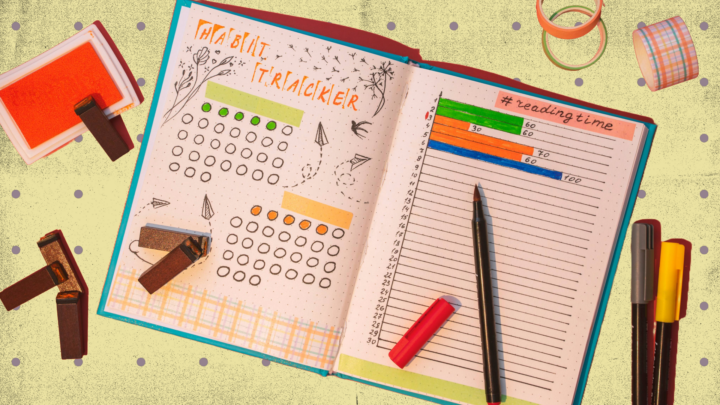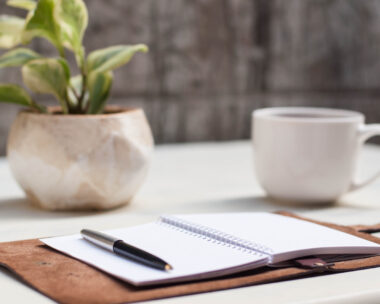If at the start of every new year, you buy a journal only for it to end up dusty in a drawer, perhaps it’s time to try the bullet journal.
The bullet journal has been around since the ‘90s and has a cult-like following of dedicated (and organised) fans.
So whether you’re looking to kick goals in 2024, stay organised or to discover a new outlet, read on to learn everything about the bullet journal.
What is bullet journalling?
Bullet journalling – or BuJo as it’s known on the internet – started out as the practice of creating checklists in a journal. Since then, it has grown to incorporate intricate designs, daily affirmations, mood trackers, habit logs and goal boards.
Whilst the bullet journal can be customisable in just about every way, for a beginner, don’t overwhelm yourself.

Key elements of a bullet journal
At its very core, the way a bullet journal works is by creating an index and various logs. From there you can build out your journaling practice– but to begin with, here are the key elements of bullet journaling.
- Index: In a nutshell, the index is just a running list of what you’ll find in your journal and where. As you write in your journal, flick back to your index to jot down a short description of what you’re writing about and the page number. This will help you keep track of your thoughts and find information easily down the track.
- Future log: Spanning several months into the future, this log is typically one page where you keep an agenda of upcoming events and goals.
- Monthly log: Your monthly log is a more detailed overview of your month-to-month agenda. You can split this log up into events and tasks.
- Daily log: The daily log is the heart of bullet journaling. This is where you’ll jot down your daily agenda and tasks. Each day gets its own dedicated section where you bullet down tasks.
- Collections (optional): Besides your index and your logs, you can also add collections to your bullet journal. A collection is a page dedicated to a specific topic. You can let your imagination run wild when it comes to these pages but most commonly, collection pages revolve around reading lists, meal planner or even a bucket list.

How to start a bullet journal
Whilst it may be tempting to race out and load up on tapes, stickers, pens and markers, at its very core, all you need to start bullet journalling is a dot grid notebook and a dedicated pen.
Once you’ve got your supplies, the next step is to consider what exactly you want to use your journal for. Though from its inception, the bullet journal was invented as a to-do list, it can also serve as a diary, goal tracker, a business planner and so much more.
Once you’ve decided upon the purpose of your journal, you’re ready to put pen to paper.







